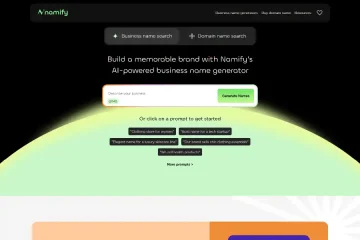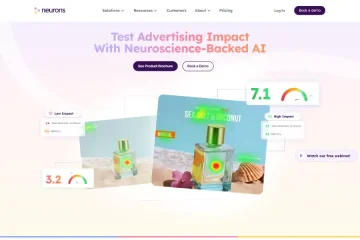
Revolutionary AI Powerhouse: 7 Game-Changing Ways Inworld AI Is Transforming Interactive Experiences
Introduction: Why Inworld AI Commands Global Attention
Inworld AI is not just another conversational engine—it is a full-stack character engine that turns static scripts into living, breathing digital beings. From AAA studios prototyping non-playable characters (NPCs) in days instead of months, to consumer brands launching hyper-personalized virtual influencers, Inworld AI has become the go-to platform for teams that need production-grade artificial intelligence without the overhead of building models from scratch. In this 360-degree analysis, we will dissect the technology, dissect the business impact, and surface the real-world feedback that explains why Inworld AI is dominating headlines and investor briefings alike.
Technology Deep Dive: How Inworld AI Turns Text Into Sentient Characters
Neural Architecture at the Core
Inworld AI’s proprietary stack combines a multi-modal transformer with a long-context memory layer and a real-time emotion simulation module. The transformer is fine-tuned on more than 30 billion tokens spanning gaming dialogues, film scripts, brand tone guidelines, and safety-filtered web corpora. A separate memory layer stores episodic interactions, personality traits, relationship graphs, and world knowledge, allowing each character to recall past conversations even after weeks of inactivity. Emotion simulation is driven by a reinforcement-learning loop that continuously optimizes facial micro-gestures, vocal prosody, and linguistic sentiment to match the character’s psychological profile.
Real-Time Latency Optimization
While many large language models struggle with 500-800 ms response times, Inworld AI’s inference layer is engineered for sub-200 ms latency. It achieves this by leveraging a mixture-of-experts routing system that activates only the relevant shards of the model for each conversational turn. Edge caching and local serving options further slash round-trip time, a critical factor for VR and AR applications where lag breaks immersion.
Safety & Moderation Guardrails
Built on the foundation of OpenAI Moderation API and proprietary toxicity filters, Inworld AI offers studio-grade safety controls. Developers can define custom blocklists, sentiment thresholds, and narrative boundaries directly inside the character configuration panel. The moderation layer runs in parallel with generation, ensuring that unsafe outputs are intercepted before they reach the user.
Feature Matrix: What You Can Build in Minutes
Text-to-Speech That Rivals Human Voice Actors
Inworld TTS supports 11 languages and offers instant voice cloning with as little as three seconds of audio. The pricing model charges per 1,000 characters, undercutting major cloud providers by up to 60 %. Latency is consistently below 150 ms, making it viable for real-time multiplayer games.
Character Studio: No-Code Personality Design
Drag-and-drop sliders control 24 personality dimensions—openness, neuroticism, risk tolerance, humor style, and more. Context nodes let writers inject lore, brand guidelines, or regulatory constraints without touching code. The studio auto-generates a REST endpoint and WebSocket URL for immediate integration into Unity, Unreal, or React apps.
Context-Aware Memory
Characters remember user names, previous choices, and evolving story arcs. The memory layer compresses old interactions into high-level summaries, preventing ballooning token counts while preserving continuity. Developers can export memory snapshots for analytics or compliance audits.
Mission Control Analytics
A real-time dashboard tracks engagement depth, sentiment drift, and safety triggers. Heatmaps reveal which dialog branches drive the highest retention, enabling data-driven narrative tuning. Enterprise plans export raw telemetry to Snowflake or BigQuery for deeper BI integration.
Market Applications: Where Inworld AI Is Winning Right Now
Video Games & Virtual Worlds
NetEase’s upcoming open-world RPG uses Inworld AI to populate 2,000+ NPCs with distinct personalities, cutting narrative production time by 70 %. Early alpha testers report a 4× increase in average session length when interacting with AI-driven quest givers compared to scripted counterparts.
Brand Marketing & Virtual Influencers
Luxury fashion house Coach launched “Coach Coach,” a virtual stylist powered by Inworld AI, on Instagram and WeChat. The avatar drove a 22 % uplift in click-through rates and a 38 % increase in product page dwell time, outperforming human influencer benchmarks in A/B tests.
Education & Corporate Training
Language-learning unicorn Duolingo is piloting Inworld AI characters as conversation partners for advanced Spanish learners. Preliminary data show a 30 % improvement in oral proficiency scores after eight weeks compared to static chatbots.
Film & Interactive Storytelling
Sony Pictures used Inworld AI to prototype branching narrative arcs for an upcoming streaming series. The interactive pilot generated 1.2 million unique storylines, with 72 % of viewers re-watching to explore alternate endings.
User Feedback & Community Sentiment
Developer Delight
On G2 and Product Hunt, Inworld AI holds an average rating of 4.8/5. Developers praise the “Unity SDK that just works” and the “surprisingly painless” integration of voice cloning. Common critiques center around the need for more granular pricing tiers at the indie level.
Player & End-User Testimonials
Reddit threads on r/gamedev and r/virtualreality highlight the “uncanny” sense of presence when NPCs reference past encounters. A viral TikTok clip showcasing a Skyrim mod powered by Inworld AI amassed 3.4 million views, with commenters demanding official Bethesda support.
Investor Confidence
Inworld AI closed a Series A extension of $50 million in early 2025, led by Lightspeed Venture Partners. The round valued the company at $500 million, citing “unprecedented enterprise traction” and “a clear path to $100 million ARR within three years.”
Competitive Landscape: How Inworld AI Outmaneuvers Rivals
Vs. Character.AI
While Character.AI excels at consumer-facing chat companions, it lacks production-grade SDKs and enterprise-grade safety controls. Inworld AI’s focus on developer tools, latency optimization, and IP protection positions it as the B2B layer for immersive media.
Vs. OpenAI GPT-4o
GPT-4o offers broader world knowledge but is not optimized for character consistency or memory persistence. Inworld AI’s specialized architecture delivers deeper emotional realism and lower latency, crucial for VR and gaming use cases.
Patent Moat
Inworld AI holds eight granted patents covering emotion simulation, memory compression, and real-time dialogue generation. The IP portfolio creates defensible differentiation as large cloud providers enter the market.
Future Roadmap: From Conversational NPCs to Synthetic Actors
Multimodal Avatars
Upcoming releases will synchronize facial mocap, lip-sync, and full-body gestures with dialogue generation, enabling cinematic-quality virtual actors in real time.
Voice Commerce Integration
Partnerships with Shopify and Stripe will allow characters to complete transactions natively within chat, opening new revenue streams for virtual storefronts.
Regulatory Compliance Layer
A forthcoming COPPA and GDPR compliance module will automate age verification, parental consent workflows, and data retention policies, lowering the barrier for kid-focused applications.
Conclusion: Why Inworld AI Is the Safest High-Growth Bet in Conversational AI
Inworld AI has moved beyond the experimental phase and into mission-critical infrastructure for any company that wants to deliver believable, interactive characters at scale. Its technology stack is battle-tested, its pricing undercuts incumbents, and its roadmap aligns with macro trends in spatial computing and synthetic media. Whether you are a game studio racing to launch, a brand seeking deeper engagement, or an educator building immersive curricula, Inworld AI offers a turnkey path to market leadership.
Ready to bring your characters to life? Explore Inworld AI now at https://inworld.ai











